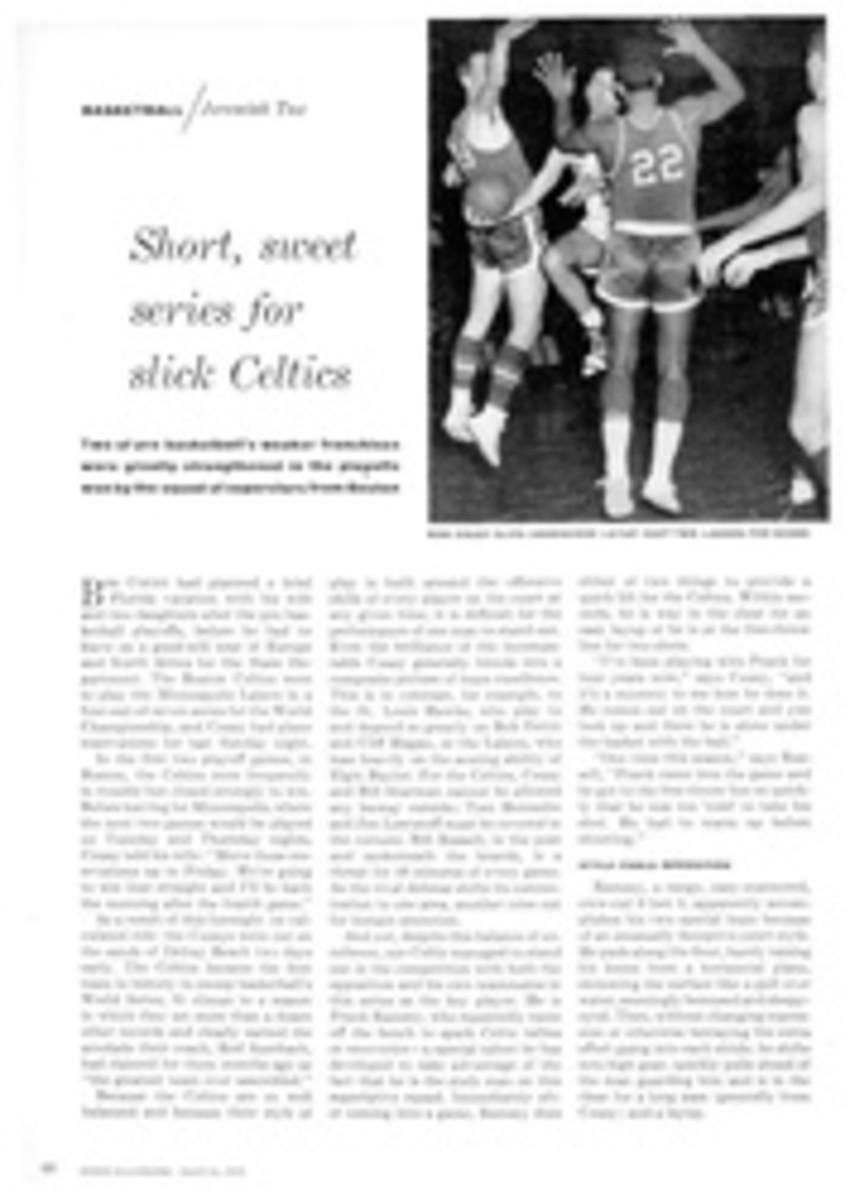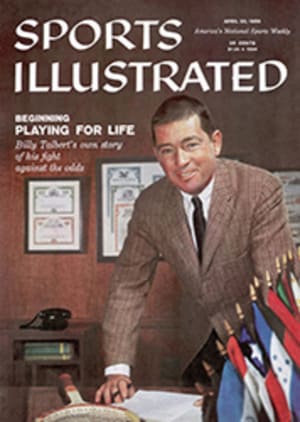
Amateur chef extraordinary
The handsome gentleman on the opposite page, who is readying a razor-sharp knife to carve the leg of lamb roasting on a spit before his kitchen fireplace, has a right to wear full chef's regalia. For Frederick Stagg of Boston is so passionate and proud a culinary artist that he actually cooks every single meal served in his exquisite Georgian residence on Beacon Hill—a house built in 1802 that once belonged to that proper Bostonian and long-time editor of the Atlantic Monthly, Ellery Sedgwick. About cooking he says: "It takes three months to teach one green girl even to chop." And about roasting: "Cooks are made, but you have to be born a turnspit. I was."
Sociable Freddy Stagg does his cooking in a remarkable kitchen, remodeled from several rooms on the garden level of the old house, and hung with bunches of herbs, ancient copper, French and Flemish still-life paintings of fruit and game. There is a table set before the fire in winter and outdoors in summer for occasions when he and his wife Cordelia are lunching or dining alone, and this arrangement also does nicely for small, informal parties. Larger dinners—for 10 to 20 people—are cooked here by Chef Stagg, but are served upstairs by the maids in a glorious chandeliered dining room. As for his cooking ability: few professional wearers of the high hat can equal, and none can surpass his encyclopedic knowledge of the hows and whys of both la petite and la grande cuisine. What's more, his results outdo both in finesse and in surprise value anything that can be ordered in even the most expensive restaurants. "Look at my bookshelf," he says; "I learned everything from Car√™me and Madame Saint-Ange, so no wonder!" (The reference is to two great classical writers on French cooking, of the early 19th and early 20th centuries respectively.)
Freddy Stagg is a British citizen, brought up in Ecuador, educated in the United States (Cutler Preparatory School and Harvard), but he is actually three-quarters Spanish. He owes his name to his English grandfather, who was a midshipman during the Napoleonic Wars, then fought with Simon Bolívar, and ended up in Ecuador married to the daughter of General Flores, the founder and first president of that country. On his mother's side he points with pride to ancestors who were conquistador companions of Pizarro, and to a present-day cousin, the Marqués de Aranda, a grandee of Spain. Stagg's extraordinary background is matched by an equally extraordinary career. He has served in the British army, traveled extensively in the Far East, and managed the second-largest cocoa plantation in the world in Ecuador. During World War II, the British Foreign Office sent him on special missions to Havana and Bogotà. Then for some years after the war—to the astonishment of his Boston friends—he became a research fellow in physical anthropology at Harvard, serving as an associate of the late Professor Earnest A. Hooton. The most recent Stagg enthusiasm has been for oil painting; entirely self-taught, he is an acceptable portraitist. But for this man of many talents, cooking remains the great art and first love. He is busy now with the preparation of a cookbook addressed "to those young people who know very little about cooking." Here are some of his ideas on this burning subject:
•"Have the largest, best-ventilated, best-equipped kitchen possible. Make it a thing of beauty with copper, colorful marmites, paintings—and a fireplace, even if only a small one."
•"Always cook in very heavy pans, preferably tinned copper or enameled iron."
•"Learn the simple things first; remember that a great maestro distinguishes himself especially in rather simple achievements that are perfectly prepared."
•"Never forget that too much or too little emotion about what you are cooking is equally bad for what you are cooking. I am very emotional, but I am very calm when I cook."
And about that leg of lamb in the picture:
•"I had the whole revolving spit thing made to order at Giraudon in Paris, and the mechanism is concealed in the wall. There is a pan below to collect the juices, but the really important thing is that I build a clear upright fire in the fireplace, because an upright fire gives a large play of flames on the meat. I never put anything on the lamb. If you like the flavor of garlic, however, you can with a knife thrust a cut clove of that herb in next to the bone. The lamb will take from 1 to 1½ hours before the fire, depending on the weight of it. This is the best, the ancient way, to do roasts of any sort. For if they are cooked in the oven, or in a rotisserie, the vapors collect, and the meat is baked, not really roasted."
In the world of culinary scholarship and achievement, I do not know of a more impressive maestro than Freddy Stagg. There is an old-fashioned dignity to his pedagogy "Your lares and penates," he intoned to me once, looking majestic and very Spanish, "should, like Jehovah, be gratified by the incense of your cooking."
PHOTO
LOUISE DAHL-WOLFE

